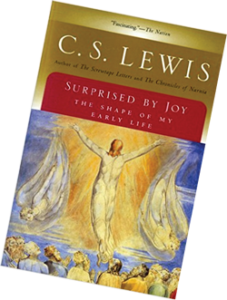Back to series


Recommended Reading:
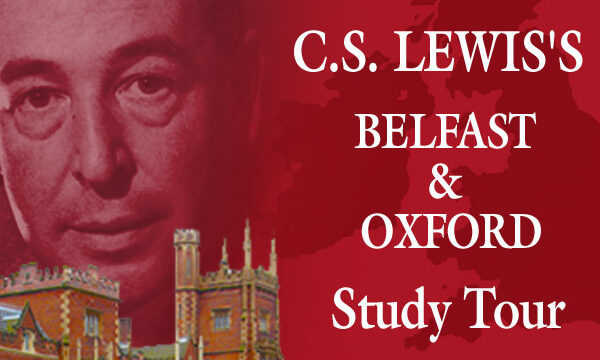
Download or Listen to Audio
Dundela Villas - (Part 2)
(This is a four-part series on Surprised by Belfast: Significant Sites in the Life of C.S. Lewis. Part 1, Part 2, Part 3, Part 4.)
Click here to open a Print - Friendly PDF
This four-part series explores locations in Belfast that have strong associations with C.S. Lewis and his family. These locations and the focus of the articles are (1) Little Lea, his boyhood home from 1905, (2) Dundela Villas, where C.S. Lewis was born in 1898, (3) St. Mark’s Church where Lewis was baptized in 1899, and (4) the University Quarter of South Belfast. Events that took place at these locations shaped Lewis’s early life and influenced it forever.
The first article in this series (Knowing & Doing, Spring 2016) described Little Lea, the boyhood home of C.S. Lewis in Belfast, Northern Ireland, and the fortunate circumstances in my own life allow me to see the house frequently. If not daily, certainly weekly I pass by and remember the events that took place there. The specific events that draw me to Lewis’s boyhood home include the many tours I lead of Lewis’s Belfast.
Recently I received an e-mail from a friend and enthusiastic reader of Lewis who participated in one of these tours. He indicated that the tour had added to his appreciation of Lewis. My friend noted that he had been only vaguely aware that Lewis was Irish. Rereading Lewis with a heightened awareness of the Irish background kindled in my friend a new enjoyment of his work. Similarly, I trust that reading this article will encourage some readers to delve deeper into Lewis’s background and maybe even make the trip to Ireland to see for themselves.
This article focuses specifically on Dundela Villas in East Belfast where Lewis was born and where he lived until 1905 before he and his family moved to Little Lea.
Dundela
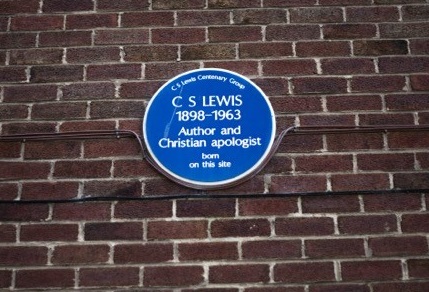 C.S. Lewis was born at Dundela Villas, on Dundela Avenue in East Belfast. The villas comprised two separate, semi-detached houses, each with its own separate entrance on a common site. The Lewis family lived in one of the villas, rented from Thomas Keown, a relative. In 1898, when Lewis was born, the location had a semi-rural feel to it. Dundela lies between the areas of Strandtown, Belmont, and Ballyhackamore to the east of the city. In 1898 the official boundary of the City of Belfast was extended to bring these outlying areas within the control of Belfast City Corporation (which has now become Belfast City Council). Today these areas are still identifiable by their specific names, but they have been subsumed within the outward march of the expanding city. Lewis’s parents, Albert and Florence (Flora) Lewis, moved into Dundela Villas following their marriage in 1894. At this location their two sons were born, Warren Hamilton Lewis (Warnie) and Clive Stapes Lewis (Jack).
C.S. Lewis was born at Dundela Villas, on Dundela Avenue in East Belfast. The villas comprised two separate, semi-detached houses, each with its own separate entrance on a common site. The Lewis family lived in one of the villas, rented from Thomas Keown, a relative. In 1898, when Lewis was born, the location had a semi-rural feel to it. Dundela lies between the areas of Strandtown, Belmont, and Ballyhackamore to the east of the city. In 1898 the official boundary of the City of Belfast was extended to bring these outlying areas within the control of Belfast City Corporation (which has now become Belfast City Council). Today these areas are still identifiable by their specific names, but they have been subsumed within the outward march of the expanding city. Lewis’s parents, Albert and Florence (Flora) Lewis, moved into Dundela Villas following their marriage in 1894. At this location their two sons were born, Warren Hamilton Lewis (Warnie) and Clive Stapes Lewis (Jack).
Although the house in which C.S. Lewis was born no longer exists, the general area is not much changed. Both of the houses that shared the name Dundela Villas were demolished in 1953 to make way for a development of apartments that are now clearly marked as the site where Lewis was born.
Descriptive details of the house, along with a few photographs that are still available, provide information on the environs. The 1901 census return describes the house as a class II dwelling, which means it had fewer than nine inhabitable rooms. On the night the census was completed it had six occupants: Albert and Flora Lewis, Warnie, Jack, Martha Barbour—the cook—and the children’s nurse, Lizzie Endicott. From the descriptions of Dundela Villas and the photographs, there was nothing particularly remarkable about either of the Villas themselves. They were adequate for a growing family; each had a stable for a pony and trap and a generously proportioned garden. The other features of the house in which Lewis was born are the views from the upstairs windows, notably those to the northwest along with those to the southeast. The garden and the views together are responsible for something that Lewis considered important.
Before considering both of these and the impact they made on Lewis, I note the more general circumstances and ambience that formed the backdrop to Lewis’s childhood. The opening sentence of his book Surprised by Joy reads: “I was born in the winter of 1898 at Belfast, the son of a solicitor and of a clergyman’s daughter.”1

In the paragraphs that follow, we get the only glimpses that are possible of the early months and years of Lewis’s life. It was a beginning that brought elements of privilege. His maternal grandfather was a Church of Ireland clergyman; his mother in consequence was highly educated, a graduate of Queen’s College Belfast, now Queen’s University. She was a mathematician and a linguist who, in Lewis’s boyhood, was able to contribute to and guide his early education. Lewis’s paternal grandfather was an engineer and self-made businessman who encouraged his son Albert, Lewis’s father, to train in law and to establish a legal practice in Belfast. In Surprised by Joy, Lewis describes his parents as “bookish” people; both had wide-ranging tastes in literature and differing sets of skills that reflected their temperaments and backgrounds.
The general ambience of family life at Dundela is remembered by Lewis as one of humdrum happiness enriched by the intellectual outlook of his parents, the pleasant surroundings, good food provided by Martha Barbour and, of course, the good humor of Lizzie Endicott, the children’s nurse. Lewis writes with particular warmth of Lizzie Endicott, describing her as one of his two special childhood blessings, the other being the company of his brother, Warnie. He remembers Lizzie for her kindness, gaiety, and good sense; he could share a joke with Lizzie, and through her his first attachments with County Down were firmly rooted. He also attributes to her the development of his sense of humor.
Although the main insights we have of Lewis’s childhood are provided in the early chapters of Surprised by Joy I also direct readers to the opening chapter of The Pilgrim’s Regress. This is the story of Lewis’s intellectual journey from atheism to Christianity told as an allegory through the eyes and experiences of a boy who is interestingly called John (Jack). The opening paragraphs of this story tell how, on one summer morning, John ran out of his parents’ garden and across the road to the wood on the other side.
In reading the sentences that follow, I have often sensed that what Lewis describes here is a reflection of what was at the front of his childhood home in Dundela. Visitors to the site readily observe how this may have been, and the references to the gardens and the cook are a good match for the narrative we find in Surprised by Joy. Be that as it may, we are left in no doubt about the importance of (1) the panorama Lewis could see from the house in which he was born and (2) the gardens in which he and Warnie played as children.
The View
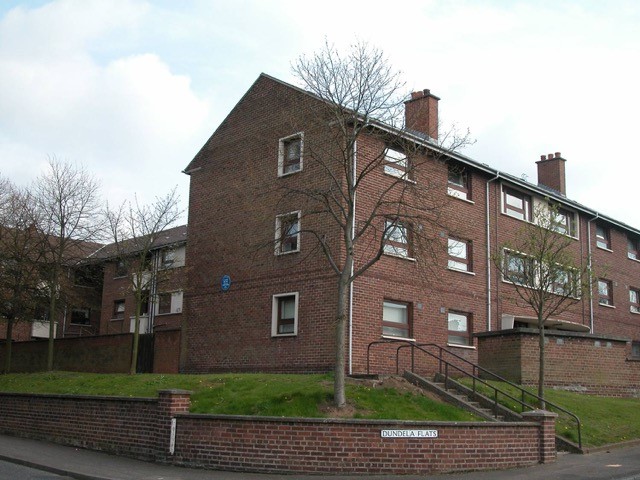 The house at Dundela stood on a slightly elevated site on Dundela Avenue. The avenue itself rises steadily from where it joins the main Holywood Road, which also rises at an incline when traveling out from Belfast City Centre. From the vantage point of the upstairs windows of the house, two ranges of the low hills that surround Belfast were clearly visible to the family.
The house at Dundela stood on a slightly elevated site on Dundela Avenue. The avenue itself rises steadily from where it joins the main Holywood Road, which also rises at an incline when traveling out from Belfast City Centre. From the vantage point of the upstairs windows of the house, two ranges of the low hills that surround Belfast were clearly visible to the family.
Looking north from the house, the view is of the hills of County Antrim. In several places, Lewis identifies the low peaks of Divis Mountain, Colin, and the Cave Hill that he could see clearly from his natal home. This same vista was also visible from Little Lea, the house to which the family moved in 1905. There is a great paragraph in a letter written by Lewis to his Belfast friend, Arthur Greeves, in the spring of 1915. In the letter Lewis contemplates his return to Belfast from boarding school at Malvern. His mind turns to the hills that were visible from Dundela Villas, to the view of Belfast Lough and to the shipyards in which the Titanic was built. The letter contains the following sentences as he thinks of home:
Already one’s mind dwells upon the sights and sounds and smells of home, the distant murmuring of the ‘yards’, the broad sweep of the lough, the noble front of the cave hill, and the fragrant little glens and breazy (sic) meadows of our own hills! And the sea! I cannot bear to live too far away from it. At Belfast, wither hidden or in sight, still it dominates the general impression of nature’s face, lending its own crisp flavour to the winds and its own subtle magic to horizons, even when they conceal it. A sort of feeling of space, and clean fresh vigour hangs over all a country by the sea.2
To the southeast, Lewis could see the low line of the Castlereagh Hills. At this moment, I am looking through my study window and gazing at those same hills with the profile exactly as Lewis would have seen them. Frequently on Monday mornings, I play golf there. When I escort groups on tour, I take them for lunch into those hills that Lewis describes. He comments that to a child in the early 1900s the hills did not look very far away, but to him they were quite inaccessible. Of the hills he writes: “They were not very far off but they were to children quite unattainable. They taught me longing—Sehnsucht; made me for good or ill, and before I was six years old, a votary of the Blue Flower.”
3Sehnsucht is the German word for “longing,” but it conveys something more than our English word—more desire, an intense desire for something that is remembered but absent. This feeling is an important one to be captured by all students of Lewis. Miss this and you miss a central theme in his writing. He attached a particular significance to it: it is very important in his story and he came to define our English word joy in his technical sense as an expression of longing or Sehnsucht. He uses the word joy differently from either pleasure or happiness. His particular use of the word emphasizes the subtle difference that joy carries with it. That subtle difference is the stab of the unexpected. It cannot be experienced at our command; it comes without warning at times when we do not anticipate it; and it is always associated with memory. It is to these important notions that we will return.
The Garden
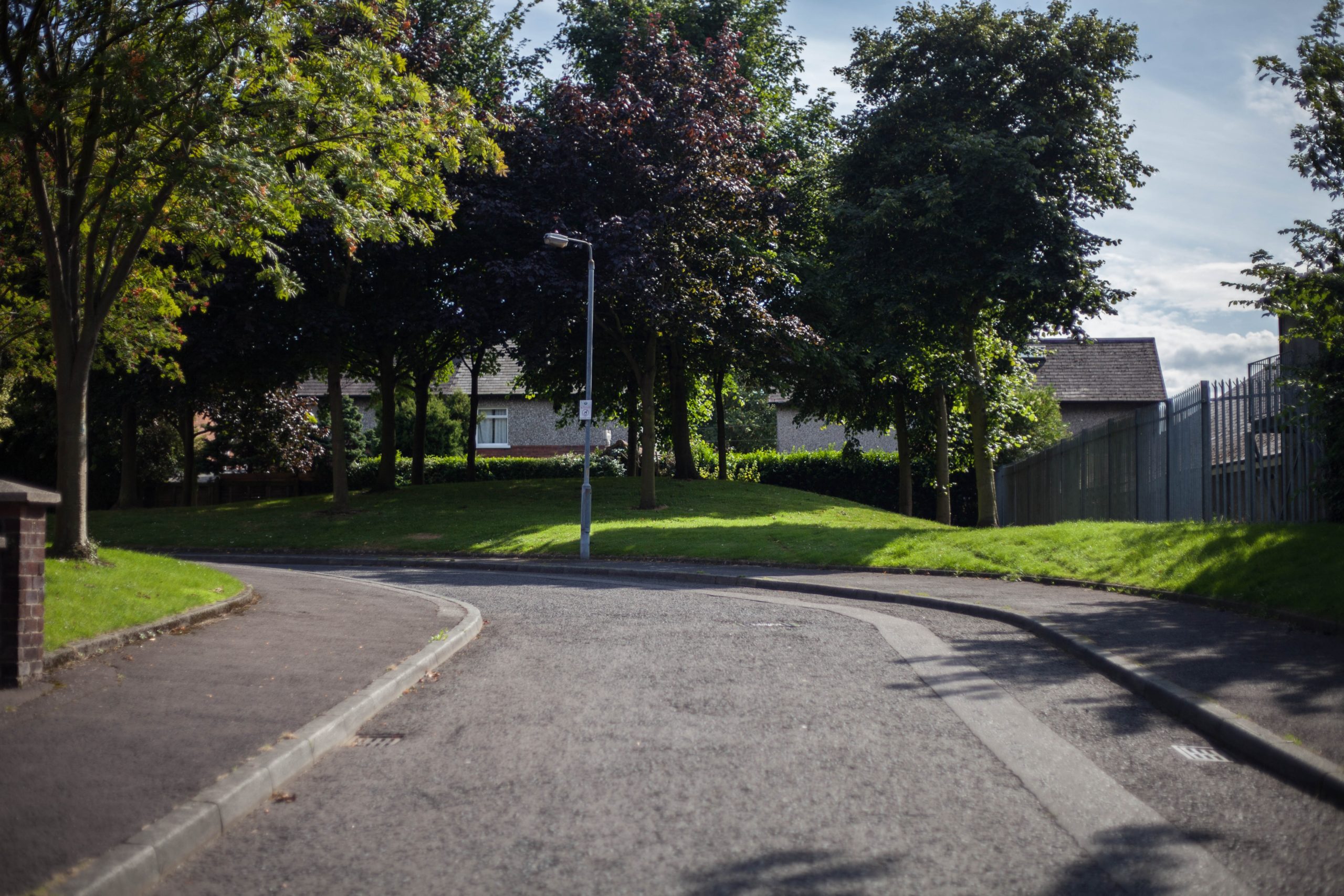 The other important feature of the house where Lewis was born at Dundela is the garden. Anyone wishing to obtain an extended glimpse of the garden can do so by going to www.authenticulster.com where I have placed three short film pieces detailing interesting aspects of Lewis’s Irish roots. The importance of the garden is explained by the description given to us in Surprised by Joy, of a summer morning when Warnie was sent out into that garden to play. He was given the lid of a biscuit tin to play with, and from the garden he proceeded to pull some moss, leaves, twigs, petals, and flowers. He used this vegetation to create a small toy garden on the lid of the biscuit tin. When the construction of the toy garden was completed, Warnie shared the result of his artistic efforts with his younger brother, who was mightily impressed. Fifty years later, when Lewis was writing Surprised by Joy, he recalled this episode from his childhood in Belfast and recorded: “That was the first beauty I ever knew… As long as I live my imagination of Paradise will retain something of my brother’s toy garden.”
The other important feature of the house where Lewis was born at Dundela is the garden. Anyone wishing to obtain an extended glimpse of the garden can do so by going to www.authenticulster.com where I have placed three short film pieces detailing interesting aspects of Lewis’s Irish roots. The importance of the garden is explained by the description given to us in Surprised by Joy, of a summer morning when Warnie was sent out into that garden to play. He was given the lid of a biscuit tin to play with, and from the garden he proceeded to pull some moss, leaves, twigs, petals, and flowers. He used this vegetation to create a small toy garden on the lid of the biscuit tin. When the construction of the toy garden was completed, Warnie shared the result of his artistic efforts with his younger brother, who was mightily impressed. Fifty years later, when Lewis was writing Surprised by Joy, he recalled this episode from his childhood in Belfast and recorded: “That was the first beauty I ever knew… As long as I live my imagination of Paradise will retain something of my brother’s toy garden.”
4Further on in Surprised by Joy, Lewis details three experiences that sparked his imagination. The first of these three experiences was the memory of the toy garden, created in the garden at Dundela. The memory was triggered by the scent from a flowering currant bush. One of the twigs that Warnie had placed in his toy garden was taken from a flowering currant bush. The scent reminded Lewis of the garden at Dundela and the feelings of longing, of joy, of Sehnsucht that it had evoked. For the rest of his life, the scent of flowering currant evoked this special memory and of the feeling he describes using the word joy. Lewis makes the following three momentous claims in respect to this experience:
In a certain sense everything else that had ever happened to me was insignificant in comparison.5
It is difficult to find words strong enough for the sensation which came over me; Milton’s “enormous bliss” of Eden . . . comes somewhere near it.6
In these comments from Lewis, readers can well appreciate why I include them. The garden at Dundela is one of the most significant locations in Lewis’s life. Here he had a special experience that gave him a special insight into the meaning of the word joy.
Concluding Reflections
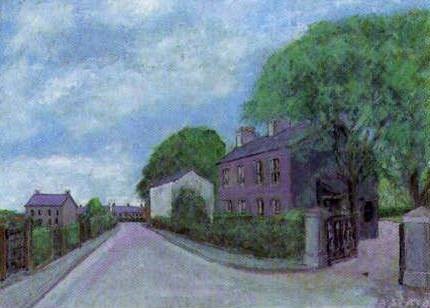 What impact might the insight from Lewis’s early life at Dundela along with his later writing have on all who find Lewis helpful to any degree in their own Christian pilgrimage? The impact of his work and, in consequence, my growing understanding of his use and definition of the word joy, has deepened my personal appreciation for the words of Saint Paul as recorded in his letter to the early believers at Philippi. In its four short chapters Philippians is filled with repeated references to the words joy, longing, and desire. Even a casual reading of a standard English translation will reveal that six times Paul refers specifically to joy, three times to longing, and once to desire. Often the joy is associated with something remembered. And sometimes more than one of these words is used in the same sentence. In addition, Paul peppers his letter with other associated words, such as rejoice, and ideas, conveying eagerness to meet the object of his desire, eagerness to complete his goal, and a straining toward the treasured prize.
What impact might the insight from Lewis’s early life at Dundela along with his later writing have on all who find Lewis helpful to any degree in their own Christian pilgrimage? The impact of his work and, in consequence, my growing understanding of his use and definition of the word joy, has deepened my personal appreciation for the words of Saint Paul as recorded in his letter to the early believers at Philippi. In its four short chapters Philippians is filled with repeated references to the words joy, longing, and desire. Even a casual reading of a standard English translation will reveal that six times Paul refers specifically to joy, three times to longing, and once to desire. Often the joy is associated with something remembered. And sometimes more than one of these words is used in the same sentence. In addition, Paul peppers his letter with other associated words, such as rejoice, and ideas, conveying eagerness to meet the object of his desire, eagerness to complete his goal, and a straining toward the treasured prize.
Lewis, more than any other writer I know, conveys to us the effect of the stab of joy. Joy, he reminds us, is never a possession. It comes from desiring something else, something yet to be. The desire implies the absence of its object. The heightened sense of joy that Paul was expressing in his letter to the Philippians came from the things he was able to recall even while in the circumstance of being imprisoned. His joy transcended his circumstance.
These stabs of joy, mentioned by C.S. Lewis and Saint Paul, are intended to effect joy in disciples everywhere and in every circumstance. I trust this reminder of Lewis’s encounter with joy will prompt you to read Philippians again with a new insight based on what we know and enable us to personalize the determination and goal that was expressed by the apostle Paul.
|
Notes: |
|||

Sandy Smith
AuthorSandy Smith, is the author of C.S. Lewis and the Island of His Birth and a Director of Heritage Experience. His book is available through www.authenticulster.com. Three short film pieces on aspects of the life of C.S. Lewis can also be viewed on the website. In addition he has produced several YouTube videos of Ireland.

Recommended Reading:
C.S. Lewis, Surprised by Joy (New York: Houghton Mifflin Harcourt Publishing Company, 2012)
One of the most beautiful and insightful accounts of a person coming to faith. Here, C.S. Lewis takes us from his childhood in Belfast through the loss of his mother, to boarding school and a youthful atheism in England, to the trenches of World War I, and then to Oxford, where he studied, read, and, ultimately, reasoned his way back to God.
 COPYRIGHT: This publication is published by C.S. Lewis Institute; 8001 Braddock Road, Suite 301; Springfield, VA 22151. Portions of the publication may be reproduced for noncommercial, local church or ministry use without prior permission. Electronic copies of the PDF files may be duplicated and transmitted via e-mail for personal and church use. Articles may not be modified without prior written permission of the Institute. For questions, contact the Institute: 703.914.5602 or email us.
COPYRIGHT: This publication is published by C.S. Lewis Institute; 8001 Braddock Road, Suite 301; Springfield, VA 22151. Portions of the publication may be reproduced for noncommercial, local church or ministry use without prior permission. Electronic copies of the PDF files may be duplicated and transmitted via e-mail for personal and church use. Articles may not be modified without prior written permission of the Institute. For questions, contact the Institute: 703.914.5602 or email us.
-
Recent Podcasts
A Welcome Change in Apologetics
by Randy Newman, Aimee Riegert on April 19, 2024We’re burdened for our friends who don’t know...Read More
-
Questions That Matter Podcast – Samuel James and Digital Liturgies
by Samuel James, Randy Newman on April 19, 2024
-
The Side B Stories – Dr. James Tour’s story
by Jana Harmon, James Tour on April 12, 2024
-
Recent Publications
Isn’t Morality Relative?
by Christopher L. Reese on April 1, 2024It is widely accepted in the Western world...Read More
-
Do Muslims and Christians Worship the Same God?
by Andy Bannister on March 1, 2024
-
Artificial Intelligence and Its Impacts on Humanity
by John Lennox on February 13, 2024
0
All Booked
0.00
All Booked
0.00
All Booked
20599
GLOBAL EVENT: 2024 Study Tour of C.S. Lewis’s Belfast & Oxford
https://www.cslewisinstitute.org/?event=global-event-2023-study-tour-of-c-s-lewis-belfast-oxford-2&event_date=2024-06-22®=1
https://www.paypal.com/cgi-bin/webscr
2024-06-22

Next coming event
Days
Hours
Minutes
Seconds
GLOBAL EVENT: 2024 Study Tour of C.S. Lewis’s Belfast & Oxford
On June 22, 2024 at 12:00 pmat Belfast, Northern Ireland & Oxford, EnglandCategories
Speakers

Sandy Smith
Author
Team Members

Sandy Smith
AuthorSandy Smith, is the author of C.S. Lewis and the Island of His Birth and a Director of Heritage Experience. His book is available through www.authenticulster.com. Three short film pieces on aspects of the life of C.S. Lewis can also be viewed on the website. In addition he has produced several YouTube videos of Ireland.



